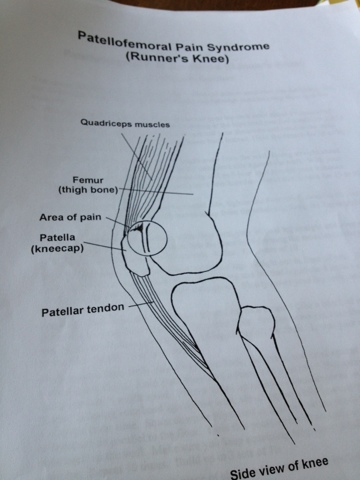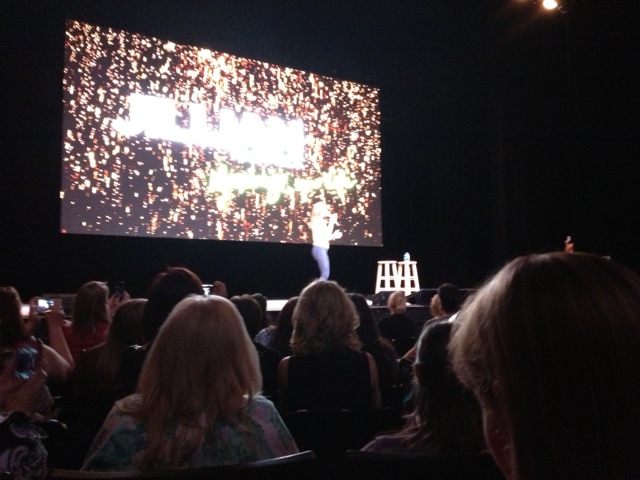FTC Disclosure: I bought this book myself, with my own funds, and am providing my unsolicited review here. Though I am familiar with Jen Larsen's work, I don't actually know her, however much I might feel like I do after reading her memoir. Links in this post are Amazon affiliate links. If you decide to click through, thank you.
As soon as I heard about , I wanted to read it. I have never had or even considered having weight-loss surgery (WLS), but I am familiar with the disorientation that weight gains and losses can cause, and the title suggested the kind of identity struggle I have had during this whole funhouse-mirror experience. Of course, it was much more extreme in Jen's case, as the span from her top weight to her lightest was 180 pounds, and she lost it all so quickly. That seemed to have left her lost and confused.
This book may not be what people interested in a weight-loss surgery memoir are looking for. There aren't a lot of gory details about the surgery itself, or tips on how to follow the recommendations for living after the surgery. Jen seems to have closed her eyes to all that and gone with a trial-and-error approach, and though she still has her piles of documents about the surgery, she doesn't seem interested in finding out more.
There's also not a lot of before-and-after porn, the staple of transformation stories. There is one set of pictures in the very back of my Kindle edition, and it reflects the same ambivalence hinted at by the title: In the "Before" picture, Jen is very big, yes, but she is wearing a sexy top, smiling, and seems totally engaged in a conversation with an off-camera friend. In the "After," a much smaller Jen is unsmiling, stiff, and totally focused on the camera. She looks, from her posture, like she is trying to make herself disappear. In an interview, when asked about a
similar set of pictures, Jen said the after photo was just a result of feeling self-conscious about having her picture taken:
I was so tired of people assuming Before is bad and After is awesome. I wanted to use a Before photo that wasn't a cliche, that didn't pander to the idea that all the smiling has to start happening in the After photo. The fact that I look kind of terrified in the After photo is actually kind of an accident. I am really not good at taking posed pictures without looking stiff and awkward.
Given the tone of the book, though, I'm not sure that is totally true. I am guessing that the after photo was taken when Jen was at her lightest weight, around 130. During this same time, the book documents her desperate struggle for approval and acceptance. The look she's giving to the camera seems to say, "Am I okay yet?" and it's a feeling I can identify with. It's the same way I felt when I got to my own goal weight, and then didn't know where to pin all my remaining feelings of discomfort and inadequacy, now that the weight was gone.
This is the real heart of the book, Jen's message that losing 180 pounds didn't bring her the feeling she thought it would. It didn't solve her problems or make her relationships better. I think anyone who has lost weight, especially those who lost and regained a little, would relate to that feeling and her experiences of looking around with confusion at the world that told her that losing weight would make all her dreams come true. Jen says, of her current weight (in the 160s), "Generally, I am happy. I don't stand out, and I can fit just about anywhere, in this world that's built for a specific size of person." It seems like fitting in, not standing out, are the important words here. That's another thing I can relate to. There is a certain amount of attention that dramatic thinness brings that can be very uncomfortable. Fitting in to the mainstream is easier in many ways.
Another important theme is how weight loss tested all of her relationships. There is an implied lie in the commercial weight-loss industry that you can change yourself without changing the people and environment around you. In Jen's case, it was obvious that her new diet and her changing self-image caused a disruption for those around her. The relationship that suffered most seemed to be one built on an unspoken contract to avoid looking at the truth at all costs. Her stronger, more honest relationships survived, but not without some struggles.
Perhaps the most striking thing to me, as a WLS outsider, was the conveyor belt from her first contact with the surgical center to the actual surgery. Everything from that first moment pushed her toward getting the procedure -- the surgeons even helpfully found her a psychiatrist and a general practitioner who would check off her insurance company's requirements without asking too many questions. There was the assumption that this surgery would take her from sickness to health, and the surgeons helpfully expedited the process. In fact, when the GP her surgeons set her up with was out of the office, she encountered a doctor who told her the truth. At more than 300 pounds, he said she was generally healthy. He obviously was upset that she was taking such a drastic step without really understanding the consequences. He urged her to wait, think about it, try other options. But at that point, she was already committed to the idea that this was her only hope.
Reading this book is a bit like watching a train wreck in slow-motion: Though a successful outcome of the surgery was dependent on her compliance to a very strict diet, Jen was not able to lose the recommended weight before the surgery to reduce the fat in her liver and make the surgery less complicated. In fact, she gained more weight. I'm not sure that it's responsible practice to perform a procedure like this when all indications were that she would not, or could not, comply with the post-surgical diet. And she didn't. It was obvious that she got no help, other than the surgery, to deal with the issues that caused her problems with food in the first place, and she seemed to shift to other distractions, like alcohol (well-detailed) and sex (hinted at) to fill the void.
This was not an easy book to read, but I read it in one frantic sitting. There aren't a lot of answers here -- the closest is a moment when Jen looks at a picture of herself in a bridesmaid's dress and thinks:
I could just be that girl. It didn't have to be a transitional state. I didn't have to be someone who used to be too fat, or someone who worried too much about being skinny. The steady stream of awareness of my body and my size and my shape could slow down to a trickle, a murmur I could tune out easily.
That is, live in the moment. Accept her body as it was. It would feel glib if there weren't all those pages before it, showing how far she had to travel to get to that insight. She urges readers to skip that middle part, of course, and provides a lot of links and resources. That part of the book feels a bit beside the point.
The point, to me, is that through Jen's experiences we can see that looking at a life through the filter of weight and body image doesn't work. Other people don't enjoy being used as measuring sticks, so the comparison game has no winners, no matter where you fall in the rankings. Relationships that are broken don't get fixed just because your dress size is smaller. Confidence doesn't come free with the purchase of a pair of size-4 jeans. For me, the biggest moment in the book was when Jen tossed out her fears about how she would look on a bike and just bought one and rode it.
I definitely recommend this book for anyone at any point in the weight loss process, and especially for people considering WLS. Jen's voice is fresh and honest. She is willing to put her experiences out on the table for readers to look through (though I'm guessing with some pseudonyms to protect people who didn't sign up for that). I have missed Jen's posts on the now-defunct Elastic Waist blog, where she wrote post-surgery diary entries as Anne. It was nice to get this dispatch from the other side and see that she is (mostly) okay.
































